A People’s Guide to Publishing: How U.S. Tariffs Affect Books
Our protagonists, Joe Biel and Elly Blue, swashbuckle their way through how recent threat of additional tariffs will affect the publishing industry
Our protagonists, Joe Biel and Elly Blue, swashbuckle their way through how recent threat of additional tariffs will affect the publishing industry
When someone mentions adventure books, what do you think of? A big, burly man adventuring out into the wilderness to, I don’t know, claim his manhood or something? Thankfully, the patriarchy doesn’t have the adventure department completely cornered.
To kick off Pride Month and Summer, we’ve put together some of our best and favorite books about queer adventurers, because adventuring isn’t just for “cis-het normies” (as Eli Sasche likes to call them in True Trans Bike Rebel).
We’ve filled our list with fantastic adventures on bikes and down rivers, but also with adventures into everyday life and into the adventurer’s own, very rad, queerness.
A quick note for PRIDE month. We use queer as it’s a truly inclusive term that has room for every member of the community, including aromantic and/or asexual and transgender and nonbinary people. It’s been reclaimed as an umbrella term for decades, and so we refuse to give it back to the people who would use it to do harm and exclude vulnerable members from the community.
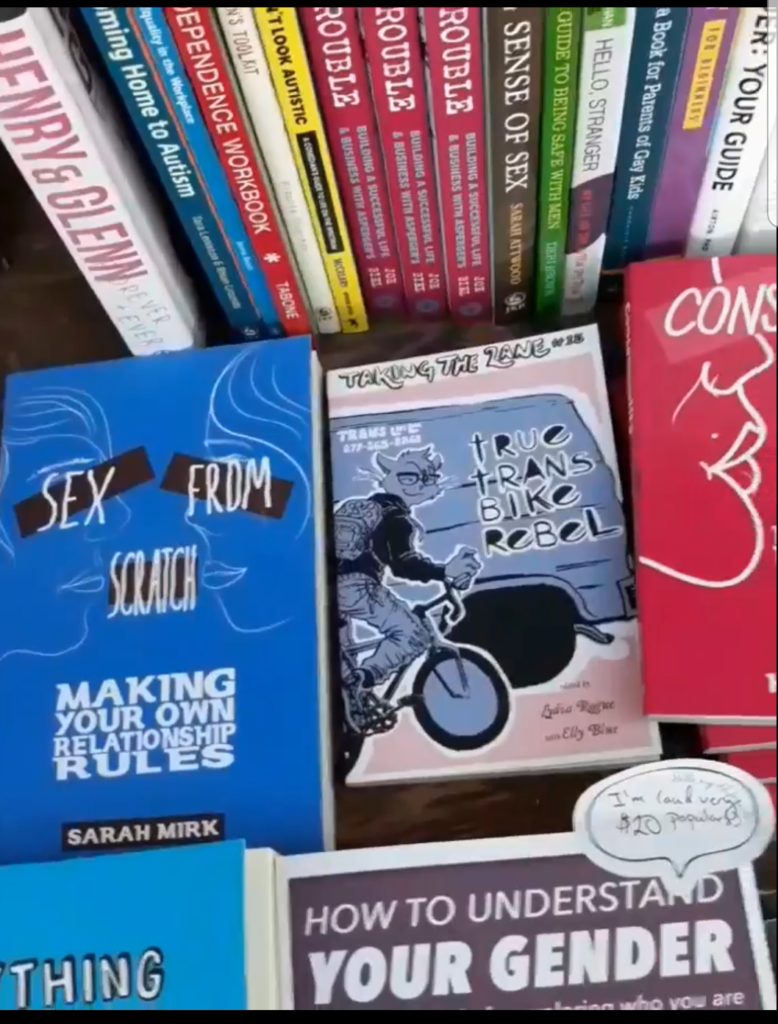
In this edition of our Taking the Lane series explores trans, nonbinary, and intersex folks’s adventures with bikes. This book ranges from one woman’s journey road-tripping by bike in “Everything I Needed to Know About Being Trans I Learned on the Pan-American Highway” to a story about a young person adventuring into nature to find solace and identity, and more.
While everything in the Lumberjanes series is great, Lumberjanes: A Terrible Plan is super great and super gay. Mal and Molly’s cute picnic date turns adventure-date when they are interrupted by a mysterious bear woman. Magical shenanigans inevitably ensue and the two must use brain and brawn to make it back to camp. This volume is the first in the series to really get into Mal and Molly’s relationship and is definitely worth a read.
Invincible Summer: An Anthology II
In the second installment of her Invincible Summer series, Nicole J. Georges has another volume of adventures in her day-to-day life. Featuring vegan recipes, fashion advice, friendship, and the rise and fall of Georges’ long-term relationship, this graphic novel will have you smiling and laughing the whole way through.
Part comic, part essay anthology, and part intimate interview, Shut Up and Love the Rain follows author Robnoxious’ journey from early sexual exploration to his “sex-positive, constantly deprogramming, uber-healthy queerness” of today. Rob’s adventures through his own queerness show us how experimentation should start early, that guilty pleasures need not be so guilty, and that there’s nothing more adventurous and exciting than discovering and living your queerness.
Also By Robnoxious, Unsinkable: How to Build Plywood Pontoons & Longtail Motor Boats Out of Scrap, is an adventure story/how-to-book hybrid following his trip down the Missouri river on a homemade boat. Rob and his friends meet wild rednecks, see sublime sunsets and encounter deadly storms in this incredible rollercoaster of a read. If Rob’s boating adventure leaves you itching to go on your very own, the DIY schematics included in the first part of the book can equip even the least experienced to build their own boat.
Unfuck Your Intimacy: Using Science for Better Relationships, Sex, and Dating
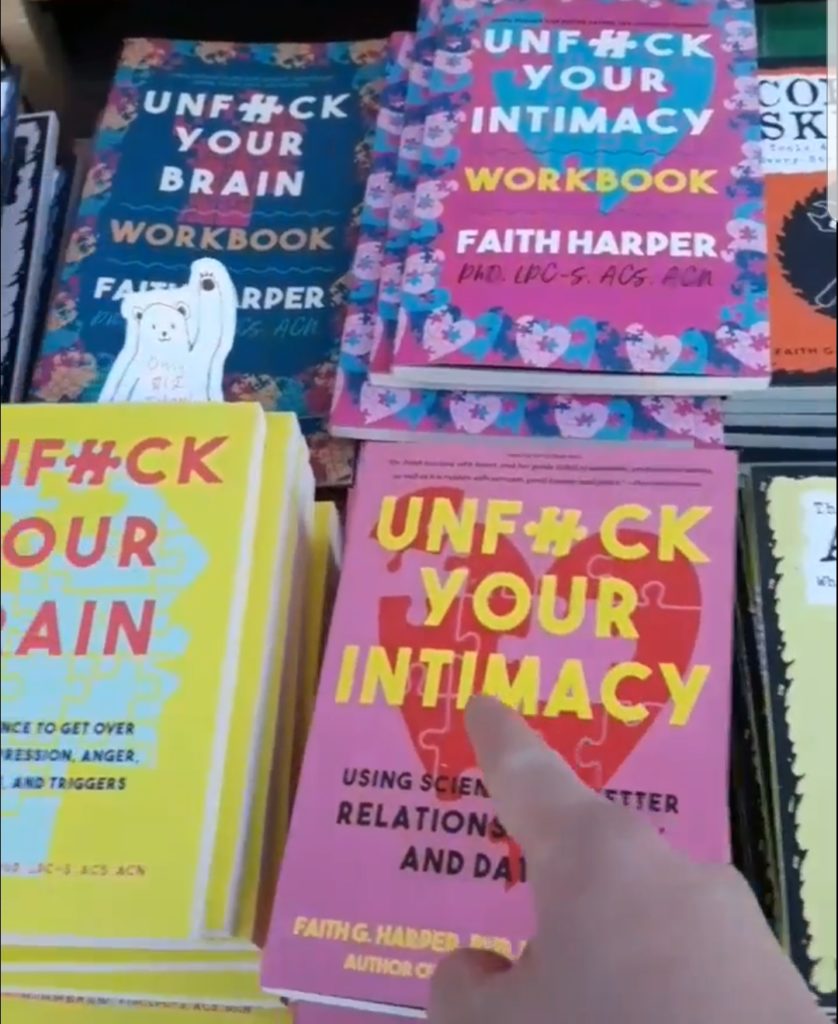
Sometimes one of the biggest adventures you can go on is one into yourself and your life. Best selling author of Unfuck Your Brain, Dr. Faith throws out all that Cosmo-grade B.S. relationship advice and uses real science to dive into topics like kinks, consent, shame, and trauma recovery.
Sections of this book also specifically cover queer relationship/sex topics, including for trans, ace/demi/aro people. Whether you’re looking to heal from past wounds, make better choices, improve an existing relationship, or figure out how to get the sex you want, this book is for you.
We recently posted a review of Unfuck Your Intimacy, so you can learn more and see if it’s for you.
What adventures are you looking forward to this summer?
This post was written by summer intern Rachel Dutton
In the latest in our vlogcast series, publishers Elly Blue and Joe Biel discuss challenges that they’ve overcome with doing their jobs, being organized, and how workflows interconnect
For many years, new publishers and authors have posed questions to us about distribution. They want to know why distribution is so expensive and exclusive. It’s a much more complicated answer than they were expecting so we’re going to break that out in a weekly video series over the next few months.
Way back when I was first figuring out my own queerness, I had this wide-eyed idea that once I was out, relationships would just magically get a lot easier. “If I’m dating a woman, I’ll never have trouble telling her how I feel!”
Needless to say, that is not quite true. As I quickly figured out, talking to anyone I was interested in could be really difficult. It took my best friend practically shaking me to realize that the nice girl who talked to me in the pop-tart aisle of the grocery store, who even gave me her number, was definitely hitting on me.
To be fair, relationships did get a lot easier in some respects. I can’t even begin to say how incredible it is to date women and be free from gendered roles and expectations in a relationship.
All the while, I am still far from perfect in the dating department. For instance, last year, I dated a girl for much longer than I should have because we were both too busy being polite to break up.
Now, all of this is kind of embarrassing. It’s easy to get trapped in my own head and think that I’m the only one in the world with these kinds of problems. Because everyone else’s relationships look so effortless, right?
That’s why I leapt at the opportunity to review Dr. Faith’s new book Unfuck Your Intimacy. If you’ve read any of her previous work—and chances are if you’re here reading this, you have—you know that Dr. Faith is like a best friend who wants nothing but the best for you, but isn’t afraid to call you on your bullshit. I can’t tell you the amount of times I had to stop reading for a minute to laugh and think, “wow, that is absolutely me.”
Dr. Faith’s humor takes a topic as, well, intimate as sex and relationships and makes it accessible and approachable, even if history hasn’t been the kindest to you.
My favorite chapter was definitely “How to Date Like a Grown-Up” and Dr Faith’s advice on “when to terminate” a relationship that’s not working. It was so helpful to reorient myself on when it’s okay to break up.
It sounds so simple, but I feel like I can finally give myself permission to leave a relationship that isn’t working for me, just because it isn’t working or we aren’t a great fit.
This book was also written with queer people specifically in mind and has advice for you no matter where you are in the LGBTQIA+ spectrum.
But don’t let me fool you into thinking this is a book just on dating. It is definitely also a book to help you get the sex you want to be having (or not having, depending on who you are).
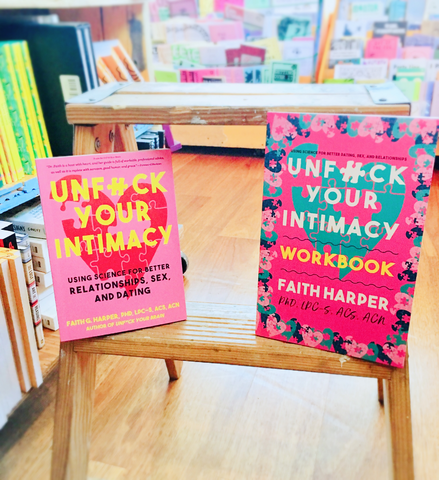
It’s filled with ways to explore your sexuality, reconnect with your body, and unlearn the toxic messages society is constantly feeding us about our bodies and our sexuality.
Reclaim your body! Reclaim your intimacy! If I can do it, you can too!
You can check out Unfuck Your Intimacy here, or check out more of Dr. Faiths books and zines here.
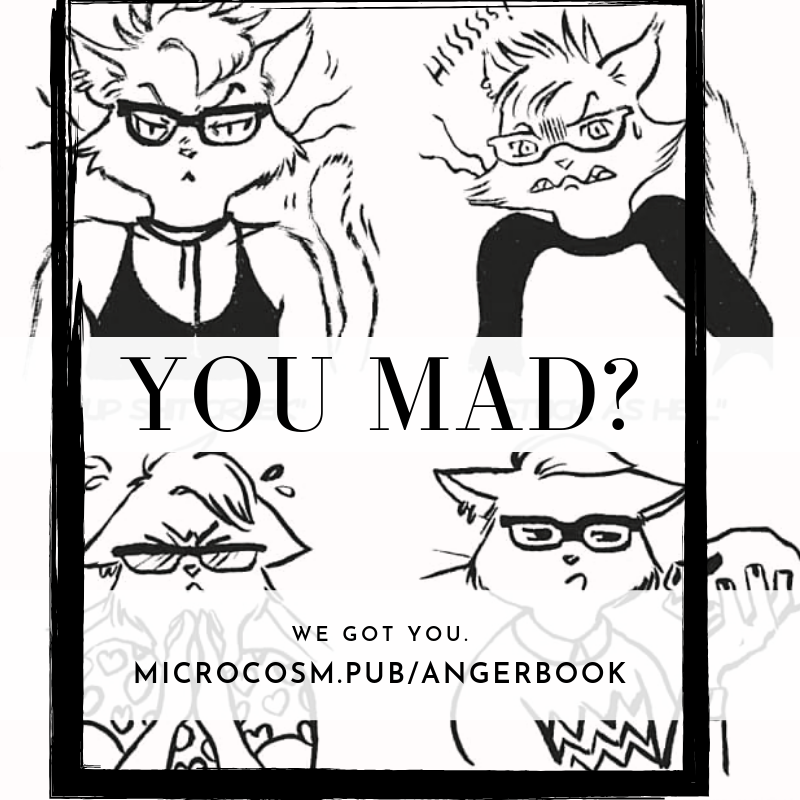
Her next book, Unf*ck Your Anger, is now live on kickstarter. Check it out!
by Briana Ybanez
intern, Spring 2019
I grew up in a quiet suburb in Southern California, and as someone who is a biracial, Mexican American I didn’t feel like I’d ever have access to literary spaces.
When I was twenty-two I changed my major from business to English. A year later I made an even bigger life change and moved to Portland, which in many aspects is considered a literary mecca. It seems like everyone here reads- encouraged by an endless downpour of rain nine months out of the year. Being in such close proximity to best selling authors and aspiring writers trying to make it in the industry helped lift a creative roadblock that I was experiencing in California. Doubt and fear, all those general symptoms that come with pursuing your dreams, melted away. I began exploring avenues of opportunity available to writers that I wasn’t aware of before.
Part of lifting that mental roadblock that was getting in the way of my success was re-thinking my own relationship with books and reading; rethinking what I was told to regard as a great work of literature and what I actually felt was great. Up until college I was told that the best pieces of literature were written by white men or white women. Period. That was it. But then I was exposed to books that were equally as powerful, if not more so, and were written by Chicana writers, like Lorna D. Cervantes, or Chilean-American Isabel Allende. It’s tragic that this revelation didn’t happen sooner. It took nearly twenty years for me discover these authors, but when I did I finally began to recognize pieces of myself in literature, and that was key to piecing together my own identity — I was finally proud of my roots, not ashamed.
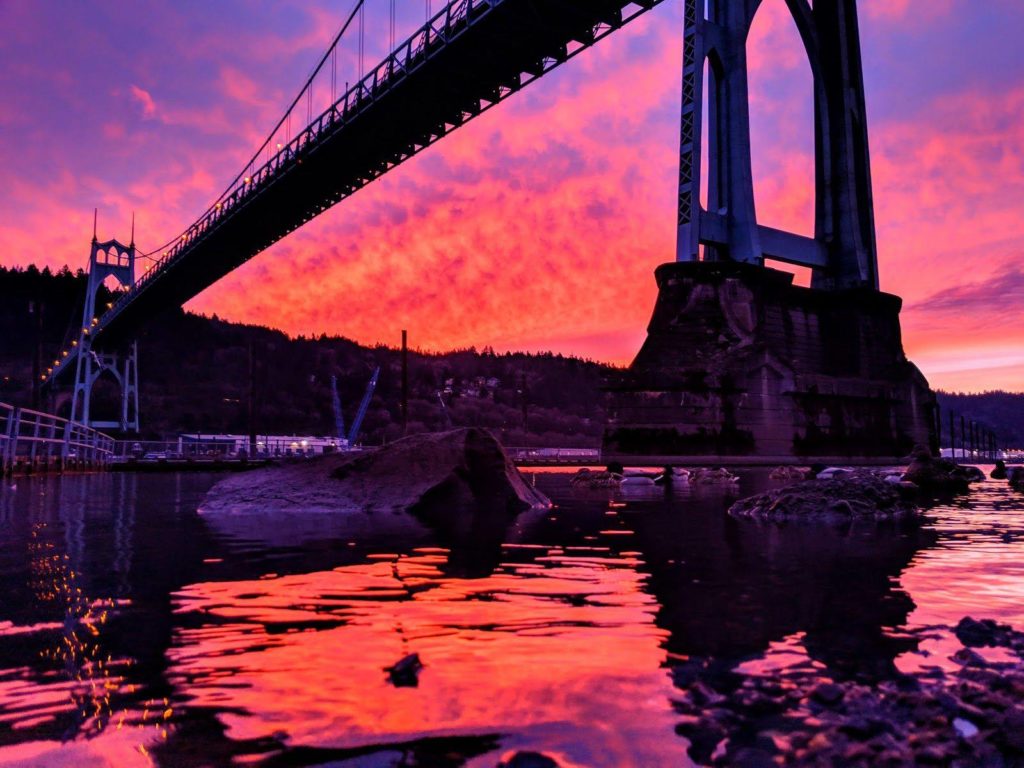
I can say with confidence that I ended up at Microcosm because a seed had been planted during this time period, a desire to figure out how to succeed in spaces that weren’t originally designed for someone like me. I was a big fan of their books and zines after discovering them at Portland’s Book Festival. I thought they were cool and edgy but also geared towards empowering audiences that you typically don’t see represented in publishing: LGBTQ, people of color, activists, people with mental disabilities, and even those who struggle with mental health.
During my interview for the internship position, I was asked why I wanted to join a publishing company. “What are you looking for?” they asked. At the time, I wasn’t sure how to answer that. I only knew that reading and writing had been a lifelong passion of mine. I was always the weird kid with my nose in a book, looking for the answers to my curiosities, or waiting until the moment when I could run home from school and find out what happened to whatever character I was currently reading about. Did I actually know anything about how those books that I loved so much were published? Definitely not.
When I learned that I got the internship, I was ecstatic. Reading their titles alone was a breath of fresh air and it is what ultimately brought me to Microcosm, because I knew that inclusivity for anyone that isn’t middle class, or white, is a huge problem in book publishing.
An infamous survey by Lee and Low Books, The Diversity Baseline Survey, indicates that the industry is 79% white, and only 4% identify as Mexican, Hispanic, or Latino. A 2016 Publisher’s Weekly article highlights that the homogeneity of the industry is not entirely due to publishing companies’ hiring practices. Although the industry giants have made claims to diversify their workforce, census data shows that the lack of diversity in publishing is also a symptom of a lack of access to higher education for people of color. Recent census data shows that 73% of Americans with college degrees are white. So a lack of authors, editors, and publishers that aren’t white can be traced to a much larger issue rooted outside of the industry itself.
Why does this matter and what does this have to do with Microcosm? It matters when you consider the immense power that the book publishing industry holds. Its impact on civilization is so far reaching, it’s scope is beyond measure. It’s an industry that is responsible for cultural production and intellectual movements, a vehicle of influence for individual minds and entire societies. Clearly, it’s time that the industry take notice of a wider audience, one that would like to see itself reflected in what they read. Microcosm intends to do just that and it shows in their business practices. They recently broke most of their ties with Amazon because their monopoly on the industry has been harmful for authors and publishers. And they not only offer their books and zines for underrepresented groups, but they offer them on a sliding scale price, to reach people that are disenfranchised by a lack of money.
After struggling with the idea that this industry may not accept me, you can imagine my excitement after taking this position. I knew this was where I wanted to be and where I could explore my place in the industry. But I was still worried that the environment would be cut throat and I’d crumble under the pressure. Now, nearly two months into my internship, I haven’t crumbled and the environment isn’t cut throat — quite the opposite in fact. Interns are encouraged to ask questions and grow from our time spent here. Once, the interns were invited in on a meeting where they reviewed the company’s past year performance. I was surprised by how business-focused the whole meeting was, and it was also eye opening because as an avid reader, it’s easy to forget that the book you’re holding in your hands didn’t end up there because of the author alone.
Microcosm has taught me that behind every book is an entire community of people. In this environment, it’s hard to ignore the work that goes in to getting books to the people. On a daily basis there’s constant contact with customers, from mailing catalogs, to making phone calls, to talking face to face with people who stop into the store.
This little community at Microcosm has revealed to me the importance of the day-to-day efforts required to publish and sell books in an ethical way. A small, independent company that stands on a firm foundation of integrity, its ultimate goal is to use their resources and means to carry a message that empowers their audience, to preserve and transmit knowledge, one book (or zine) at a time.
Are you angry enough to start throwing milkshakes? Well, yeah. So are we. It makes for a fantastic statement – while making the opposition look like a fool – but it sometimes feels like it’s the only thing you can do.
It can be easy to feel like there’s nothing you can do about the world right now – but honestly, that’s what the people in charge want you to think. Take a look at these books and zines and learn how to fight back and make a difference in your community. (But I’d keep buying milkshakes – just in case.)
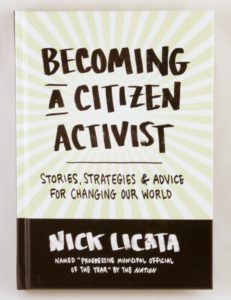
Do you not even know where to start? This book will give you inspiration by telling the story of previous activists who made a difference in their communities. Learn from the best of the best when it comes to learning how to protest and become an activist.
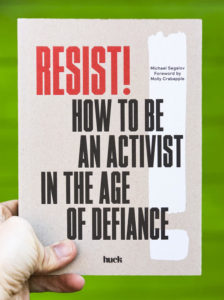
Want more straight-forward advice and have things broken down step-by-step? This book walks you through organizing protests, talking to politicians and playing the long game when it comes to creating change in your community. Each section also has a real-life case study so you can read about what it looks like when the advice is put into practice.
Want to get your kids involved? Try Girls Resist! By Kaelyn Rich for a young adult-friendly version!
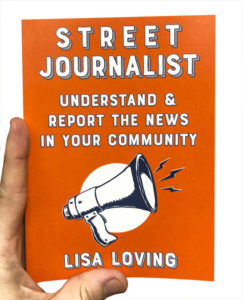
Just as important as organizing protests is getting accurate information out there. Corporate media is corrupt and, while they aren’t quite as bad as Trump claims, they certainly aren’t the unbiased view of the world they claim to be. Learn how to cover the news in your communities and fight back against corporate media with this easy-to-follow guide on how to become a journalist.
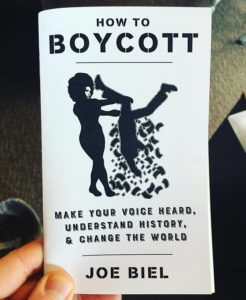
We talk about boycotts a lot and how they can force change, but how do you do it effectively? What does it mean to organize a boycott – and how do you follow through? Read this zine to learn about the intricacies of boycotts and their long history – and why just refusing to shop at a specific store isn’t necessarily a boycott.
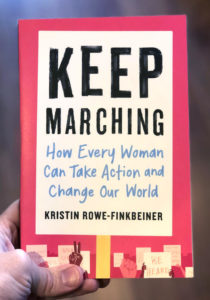
Are you upset about the attacks on women’s rights? Did you march in 2017 during the Women’s March and don’t know how to get that momentum going again? This book dives deep into how to take that momentum and keep the protests going.
When you’re gearing up for your protests, grab some of the zine How to Plan for Action to pass out – it helps protesters understand their rights and how to be a more respectful protester in their community. (Or brush up on How not to get Arrested at a Demonstration.)
And don’t forget to tell your elected officials exactly what you think of them trying to take away your rights with the easy-to-write postcards found in Make Your Voice Heard Postcard Book.
Need more than 40 postcards? Check out other postcard designs – teach them something with Art of Instruction or have a woman be the face of your protest with Rad American Women. Sending angry letters to politicians has never been easier!
We’ve also got you covered when it comes to protest swag – stickers, buttons and patches galore! So get out there and start fighting back – it’s the only way to turn things around.
A little back-story: We asked, and were invited, to comment to Kickstarter’s executive team about this week’s news that they will not voluntarily recognize employees’ efforts to unionize. Here is the letter we sent to them; we decided to make it public in the hopes that fellow users of the platform, both creators and backers, will be inspired to also make their voices heard on this matter. This decision affects not just the workers at Kickstarter, but will set a precedent for other tech companies, many of whom employ large teams of lower-paid manufacturing workers.
Dear executive team,
For the last decade, I’ve been a heavy user of Kickstarter as a creator (I have something like 40 projects under my belt) and a backer, and I have advocated strongly for your platform to any of our publishing colleagues who will listen. Without Kickstarter, it’s unlikely I would have a career creating books and connecting with readers. Being able to use it now substantially helps us to create an equitable workplace and pay a living wage to a growing staff—and in publishing, that’s no mean feat.
Just this past Saturday, my partner and I traveled to New York so my partner could participate as a panelist in the Next Page conference organized by your publishing lead. I nearly cried during the conference because it is the first publishing event I’ve ever attended where the majority of participants and the assumed audience were not white, wealthy, able-bodied cis people; and not coincidentally, the only such event I’ve attended where every session furthered an idealistic and practical conversation about how to make our industry more inclusive. It cemented to me something I’ve always implicitly believed about Kickstarter—that at its very bones, the company is committed to leveling the playing field and has goals beyond profit.
That’s why it was so painful to return home and read in yesterday’s Verge article that you have chosen not to voluntarily recognize workers’ efforts to unionize. Worse, the CEO’s comments seemed to place blame on the workers for cultural issues like trust. I don’t know the situation at Kickstarter, but in my experience as a manager, that culture comes from the top, and labor complaints don’t happen without cause.
We are currently running a Kickstarter project for a book we care deeply about. But this week, we find we can’t promote this project in good conscience. I would describe the reactions in our office as ranging from bummed to pissed. Your decision is bafflingly, profoundly at odds with the ethic Kickstarter projects in every piece of its branding and behavior—and which has been upheld by every single worker I’ve encountered over the years. Kickstarter and its people are part of our community, and this feels personal. It’s also at odds with our own company’s ethics and history—our founder and publisher is the grandchild of immigrants who were brought out of poverty by labor unions. Our owners and managers make a comparable wage to the rank and file and we are in the process of becoming worker-owned.
We’ve put our efforts on our current project on hold and are discussing canceling it altogether; we’ll decide next week. Our decision will likely be swayed by communication we received from one of the Kickstarter union organizers thanking us for the solidarity and urging us to continue with our project, as everyone’s shared goal here is to fund and promote creative work. We truly look forward to getting back to focusing on this! But in the meantime, if it comes down to it, we will not cross a digital picket line and we’ll urge our community to do the same.
I’m writing to urge you to reconsider accepting the union of your own accord. Your workers deserve it, the rest of the tech industry needs you to set a strong example, and you’ll re-earn the lifelong loyalty of backers and creators—well, ourselves, certainly. It’s difficult to see what you can’t win.
Thanks for the opportunity to write to you about this.
Elly Blue
Microcosm
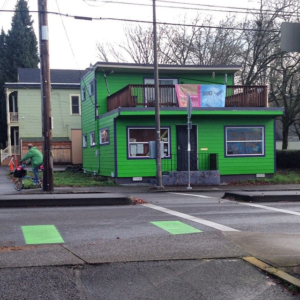
The publishing industry was shook last week with the news that Baker + Taylor would no longer wholesale to bookstores and will be closing two warehouses in July. This leaves only one major player for stores to purchase books from—essentially a monopoly. Which, let’s face it, historically tends to be less than great for everyone else.
For those of you watching from the stands, what this all means is there is now only one (well, kind of two, but really just one) big business left to supply books to bookstores. Stores can order directly from publishers, but it usually makes more sense for them to order all those publishers’ books at once from the same wholesaler, rather than trying to track down and manage dozens or hundreds of different accounts.
What you may not know is that, along with publishing and distributing our own books, Microcosm is also a specialty wholesaler, offering a curated selection of titles from major houses, large indies, small presses, self-publishers, and DIY zine-makers! Alongside our 500 or so published titles, we carry thousands of others, selected for their interest and alignment with our mission and values. An overwhelming 8,000 new books are published every day, and we’ve already sorted through them to find the best ones.
Anyone who sells books can order stock directly from us at wholesale rates. Set up a MyCosm account on our website and select “wholesale” at checkout. You can also drop us a line or an email. We have no paperwork, no credit approval process, fast turnaround times, and extremely kind customer service.
If you’re buying for a bookstore, you can access our whole catalog through your sales reps for Book Travelers West on the west coast, Fujii in the midwest, and Como out east. Your sales rep can brief you on terms. Please get in touch with them (or with us to connect you) to find out more.
Continuing our year of adventure theme, a few of the Microcosm staff talk the many types of experiences that brought them where they are today. BONUS! Some even describe their life as if it were an adventure novel.
This year we went Independent with a big I, which means we both publish and distribute our own books on our own (with the help of lovely reps and teams) and also sell other publishers’ books, rather than having our books available through a single mega-distributor. This change has meant a lot of longer days and more complicated paperwork, new challenges and incredible possibilities. There’s no fantastical reason we’ve gone independent- it’s just the best way to do the best work. But there is a fantastical individual reason for why each of us have joined Microcosm in the first place. What brought us here, in so many cases, was adventure, big and small.
We all had the audacity to go after what we believed was a better way; to believe we could find a way to contribute to affecting people’s lives for the better, and in turn be changed for the better, too. We all took the step, often many steps, to become better versions of ourselves, one way or another, and want to share that sense of possibility with the world. Guess the real adventure was inside us all along (we say with cheesy jest).
Joe

Twenty five years ago Joe’s life expectancy would be minutes, not hours. The adults around him behaved like children, and morals were adopted to be convenient to the person pretending to exhibit them. Suicidal ideation was the norm, not the exception. Through a series of brief solaces and windows into a more meaningful life, Joe discovered punk rock and his life was forever changed. Publishing became a daily task rather than an occasional hobby. Before long he began coaching suicidal teens and twenty-somethings off the ledge on a weekly basis. It became the mission.
But is it possible to create tools so those people never find their way to the ledge in the first place?
What adventures brought me to [creating] Microcosm? I was a drunk, autistic teenager who needed a hobby and wanted to create the resources that I lacked as a child. It seemed better than rotting in the gutter. It was!
In a world where little brown girls are told time and again that they’ll have to work twice as hard and be twice as smart to get ahead, this little brown girl is taking names and kicking ass with half as much imposter syndrome and double the self-love than ever before. Follow Sidnee on her quest to slay her to-do list, vanquish the disorganization, charm every customer, and manage and encourage the emotional well-being of the Microcosm Staff. She may be short, disheveled, and perhaps a little too perky but you’ll never guess where she’s headed next — and neither can she!
What kind of adventures brought me to Microcosm? Finishing college, falling in love, and realizing no matter how noble it was I didn’t want to work in the constantly heartbreaking social service sector.
In 2014 my partner and I decided to move to Portland. We left that summer and made it to Nevada where we ran into car trouble and had to stay and work the rest of the year to be able to save up enough for a new vehicle and to fund the rest of the trip. When we made it to Portland in February, 2016, the housing arrangements that had been made fell through and so we lived in a van for 3 months until we had again saved enough for an apartment. When we weren’t working temp jobs we were in the van, usually in the parking lot of a library or Walmart so that we could use their wifi, and I would work on beefing up my portfolio and search for full time work. It was during our time in the van that I first discovered Microcosm.One afternoon, we were parked in the Multnomah County Library parking lot and I stumbled across Microcosm’s website. I was blown away by their selection of books and zines and the way they utilized the publishing business as a form of activism. That same day I sent them a note through the FAQ page and tried to bribe them with food for an interview. Joe said sure and I’ve been working for them in some capacity ever since.
Adventure?
I was in Port Peril, trying to rescue someone off a pirate ship, and suddenly found myself conscripted into a life of piracy. I’ve been fighting bilge rats and trying to make friends on the ship The Wormwood ever since, but it sounds like there might be a mutiny on the horizon and I’m not so sure I’m going to make the cut. [grins]
Probably not the best to ask me about adventure the day after my bi-weekly D&D game. That’s all I have on my mind. We’re doing Pathfinder’s Mutiny on the Wormwood, if you were wondering. We’re on day 3 right now so shhh, no spoilers!
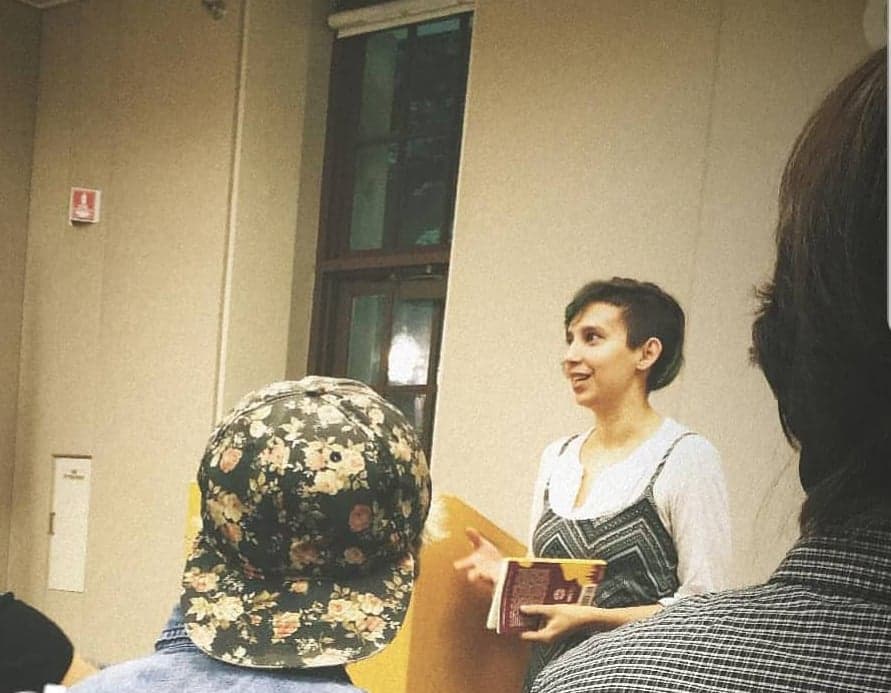
Cyn dreamed of travel and books her whole life, but the last place she had ever expected to be was the Pacific Northwest. But after stagnant years of underemployed depression, a manic period, and a craving for more, she pushed her life in a new direction. She packed up their little family and drove across the country to try a new kind of life and follow their weird dreams. As it turns out, the weird dreams are the most fun to realize …
Driving across the country to get here with my partner and our dogs and all our shit was an adventure. Driving back across again together was stressful as fuck, then driving back again by myself with the dogs and also my little sister was a nightmare. What changed? Was the first an adventure because it was the first time? The other trips stressful because they were no longer as exciting, just necessary? I guess it’s like when you start a new group or job or activity, everything is just a little bit exciting, but once you’ve done it for months, or years, most of it’s just work. Sometimes that work leads to the raddest results, sometimes just the right ones.
Is work just adventure we’ve become used to? Is life?
Excuse me while I go have my existential moment elsewhere.
Kellie didn’t mean to fall in love again. Hadn’t she admitted that the wounds from her last relationship were still healing? But this time was different. Nightly chats turned into dating, months turned into years, and soon she was finding herself flying out to Oregon, a magical land full of nature, bicycles, and stations where you DON’T pump your own gas. Spurred on to pursue her dreams even further, Kellie seeks out a publishing house as a volunteer base, hoping to gain valuable knowledge of the industry in preparation to create a children’s book, but as she walked through the doors of Microcosm Publishing, Kellie realized that her life adventures were just beginning….
Adventure, for me, can be anything. That edge of the sidewalk bordering the street? That’s not a sidewalk at all. It’s a tightrope, and if you fall into the ocean below who knows what’s lurking beneath it to eat you. That right fork on the hiking trail? It might lead to Mordor if you’re not careful, but it might also lead to Rivendell, and it would be a crime not to find out which it is.
As a kid, my sisters and I were always on an adventure. Sometimes we’d shape it; sometimes it would shape us. As I got older, parts of life got more boring, and so, to keep the excitement alive, I’d turn average, everyday things into an adventure.
What brought me to Microcosm? The adventure of romance and exploration. My boyfriend lived an entire state away and we’d been feeding off of Skype as supplement for four years. Further continuance just would not do. I moved to Oregon to continue the adventure, which turned into further exploration as I looked into developing a children’s book. My wanderings led me to Microcosm, where the adventure has continued as I learn more and more about the publishing industry, which was, after all, the reason I volunteered.
Kristine
Chock-full of political science degrees, Kristine declined job offers from cab companies and the CIA to do the only thing that made sense in this crazy world: open and run a COMIC STORE. Highlights: meeting Will Eisner, Jack Kirby, Phoebe Gloeckner, and R. Crumb; what a weird superhero team they make!
Wading knee-deep into publishing was the next logical step – promoting comics-as-literature, fighting monsters and apathy, here and abroad. Bonus: smuggling books to 5 continents. It’s a good life.
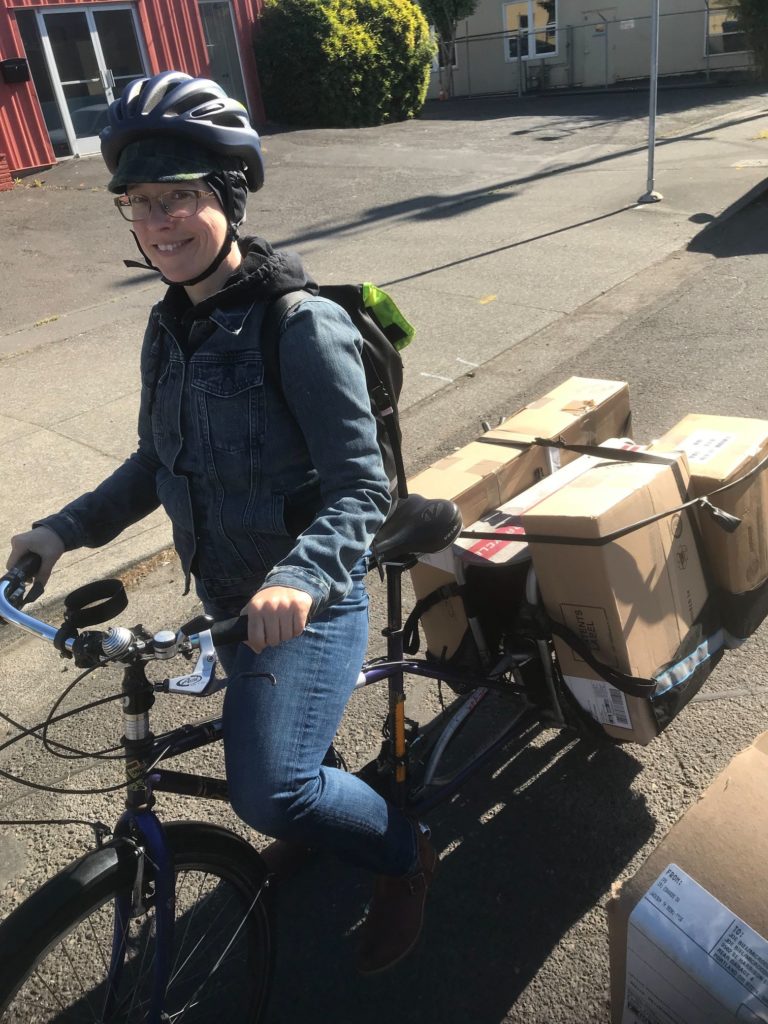
What adventures have gotten you where you are now? What do you still look forward to?